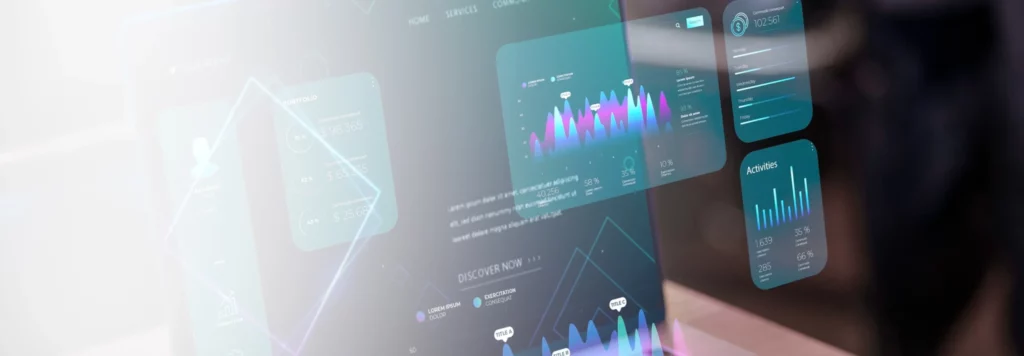Introduction
Creating an ecommerce app can be an exciting and rewarding project. Whether you’re a business looking to expand your online presence or an entrepreneur with a new idea, an ecommerce app allows you to reach customers directly on their smartphones. However, before diving into development, it’s crucial to understand the various factors that influence the cost of building such an app. Knowing these cost factors will help you plan your budget effectively and avoid any surprises along the way.
Understanding the cost of developing an ecommerce app is important for several reasons. First, it helps you set a realistic budget, ensuring that you allocate enough resources to cover all aspects of the project. Second, it allows you to prioritize features and functionalities based on your budget, so you can focus on what’s most important for your business. Finally, having a clear idea of the costs involved helps you make informed decisions, from choosing the right development team to selecting the best technologies and tools for your app.
By breaking down the cost factors, you can better understand the financial investment required and plan accordingly. This not only helps in creating a successful ecommerce app but also ensures that your project stays on track and within budget. So, let’s dive into the key cost factors you need to consider when developing your ecommerce app.
Factors Influencing the Cost
Several factors influence the cost of developing an ecommerce app. By understanding these factors, you can better plan your project and allocate your budget wisely.
App Complexity
The complexity of your app plays a significant role in determining the cost. Here’s how different levels of complexity can impact your budget:
-
Basic Features – An app with basic features is generally less expensive to develop. These features include user login, product listings, a shopping cart, and a simple checkout process. While these are essential for any ecommerce app, they are relatively straightforward to implement.
-
Advanced Features – If you want to offer a more sophisticated user experience, you might consider adding advanced features such as user profiles, product reviews, wishlists, multiple payment gateways, and order tracking. These features enhance the functionality of your app but also increase development time and cost.
Platform Choice
The platform you choose for your e-commerce app also affects the cost:
-
Native Apps – Developing native apps for iOS and Android separately ensures the best performance and user experience but can be more expensive because it requires separate codebases and expertise for each platform.
-
Cross-Platform Apps – Using frameworks like React Native or Flutter allows you to create apps that work on both iOS and Android from a single codebase. This can reduce development time and cost but might compromise on performance compared to native apps.
-
Web App – A web app can be a cost-effective alternative, as it works across all devices with a web browser. However, it may not provide the same level of user experience as a native or cross-platform app.
Design and User Experience
The design and user experience of your app are crucial for attracting and retaining users:
-
Custom Design vs. Templates – Custom designs tailored to your brand can make your app stand out but are more expensive than using pre-made templates. Templates can be a cost-effective option, but they might lack uniqueness.
-
UX/UI Design Importance – Investing in good UX/UI design ensures your app is user-friendly and visually appealing. This can lead to higher user satisfaction and better sales, justifying the additional cost.
Development Team
The cost of your development team is a major factor in your overall budget:
-
In-House vs. Outsourced Developers – Hiring an in-house team gives you more control over the development process but can be costly due to salaries, benefits, and other overheads. Outsourcing to experienced developers can be more cost-effective and provide access to a broader talent pool.
-
Team Size and Roles – The size and composition of your team also impact costs. Typically, you’ll need developers, designers, project managers, and QA testers. The more complex the app, the larger the team required, and the higher the cost.
You can choose 3rd party companies like Raindrops Infotech for your app development needs means you get top-quality service from start to finish. Their team of skilled developers, designers, and project managers work together to create custom solutions that fit your business perfectly. With over 500 successful projects and a 98% customer satisfaction rate, Raindrops InfoTech has a proven track record of delivering results. They are experts in both native and cross-platform app development, ensuring your app works smoothly on all devices. Raindrops InfoTech also focuses on making your app user-friendly and up-to-date with the latest technology. They communicate clearly, deliver on time, and provide support even after your app is launched, making them a reliable partner for your app development project.
Third-Party Integrations
Integrating third-party services into your app can add functionality but also increases costs:
-
Payment Gateways – Integrating multiple payment gateways like PayPal or Stripe ensures a smooth checkout process but requires additional development and maintenance.
-
Shipping Services – Integration with shipping services allows for real-time shipping rates and tracking, enhancing the user experience but adding to development costs.
-
Analytics Tools – Incorporating analytics tools helps you track user behavior and app performance. While valuable, these integrations require additional development work.

Backend Infrastructure
A robust backend infrastructure is essential for the smooth operation of your ecommerce app:
-
Hosting and Servers – Reliable hosting and server infrastructure are necessary to handle traffic and ensure your app runs smoothly. This can be a recurring cost that scales with your user base.
-
Database Management – Efficient database management ensures that user and product data is stored and retrieved quickly and securely. The complexity of your database can affect both development time and cost.
-
APIs and Microservices – Using APIs and microservices can modularize your app’s functionality, making it easier to maintain and scale. However, designing and implementing these can increase the initial development cost.
By considering these factors, you can get a clearer picture of the costs involved in developing your ecommerce app. This understanding allows you to make informed decisions, prioritize features, and plan a budget that aligns with your business goals.
Cost Breakdown
Understanding the cost breakdown of developing an ecommerce app helps you allocate your budget effectively across different phases of the project. Here’s a detailed look at each phase and what it typically entails.
Planning and Research
The initial phase of planning and research is crucial for laying the groundwork for your ecommerce app:
-
Market Research – Reliable hosting and server infrastructure are necessary to handle traffic and ensure your app runs smoothly. This can be a recurring cost that scales with your user base.
-
Requirements Gathering – Defining clear requirements ensures that everyone involved in the project understands the goals and scope. This involves meetings with stakeholders, creating detailed documentation, and setting project milestones.
Design Phase
The design phase focuses on creating a user-friendly and visually appealing interface for your app:
-
Wireframes and Mockups – Wireframes are basic sketches of your app’s layout and functionality. Mockups add more detail, including colors, fonts, and images, to give a clearer picture of the final design.
-
Prototype – A prototype is an interactive version of your app’s design. It allows you to test user interactions and gather feedback before moving on to development.
Development Phase
This phase involves the actual building of your ecommerce app:
-
Frontend Development – Frontend development focuses on creating the parts of the app that users interact with. This includes the layout, navigation, and overall user experience.
-
Backend Development – Backend development involves setting up the server, database, and application logic that power your app. This is where data is stored, processed, and managed.
-
Integrations – Integrating third-party services, such as payment gateways, shipping services, and analytics tools, adds necessary functionality to your app. This requires additional development work and testing.

Testing and Quality Assurance
Testing ensures that your app works correctly and provides a good user experience:
-
Unit Testing – Unit testing involves checking individual components of your app to ensure they work as expected. This helps catch issues early in the development process.
-
Integration Testing – Integration testing examines how different parts of your app work together. This is crucial for identifying issues that might arise when components interact.
-
User Acceptance Testing – User acceptance testing (UAT) involves real users testing your app to ensure it meets their needs and expectations. Feedback from UAT can lead to final adjustments before launch.
Deployment and Launch
Once your app is ready, it’s time to deploy and launch it:
-
App Store Submission (iOS, Android) – Submitting your app to the App Store (for iOS) and Google Play (for Android) involves meeting specific guidelines and requirements. This process can take some time and might require adjustments to your app.
-
Initial Marketing and Promotion – Launching your app successfully requires an initial marketing push to attract users. This can include social media campaigns, email marketing, and other promotional activities.
Maintenance and Updates
After launch, ongoing maintenance and updates are necessary to keep your app running smoothly and meeting user needs:
-
Bug Fixes – Even with thorough testing, some bugs may only appear once your app is in use. Regular bug fixes ensure a smooth user experience.
-
Feature Updates – Adding new features and improving existing ones keeps your app relevant and competitive. This requires ongoing development work.
-
Customer Support – Providing excellent customer support helps retain users and address any issues they encounter. This can involve setting up a help desk, FAQs, and other support channels.
By breaking down the costs associated with each phase, you can better understand where your budget is going and ensure that each aspect of your ecommerce app development is adequately funded. This comprehensive approach helps in creating a successful app that meets your business goals and provides a great user experience.
Conclusion
Developing an ecommerce app involves understanding and managing various cost factors such as app complexity, platform choice, design, development team, third-party integrations, and backend infrastructure. Each phase, from planning and research to design, development, testing, deployment, and maintenance, contributes to the overall cost.
Conclusion
Developing an ecommerce app involves understanding and managing various cost factors such as app complexity, platform choice, design, development team, third-party integrations, and backend infrastructure. Each phase, from planning and research to design, development, testing, deployment, and maintenance, contributes to the overall cost.
Final Thoughts on Budgeting
Effective budgeting requires careful consideration of each phase and factor, ensuring you allocate resources wisely to create a high-quality app that meets your business goals and user needs.






